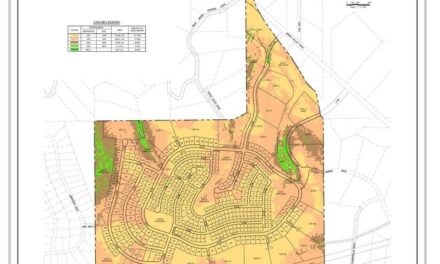Divorce, often regarded as one of life’s most challenging transitions, encompasses a myriad of emotional, legal, and logistical complexities. At its core lies the dissolution of a union once bound by love and commitment, a process fraught with uncertainties, tensions, and divergent paths. One of the fundamental differentiators in the landscape of divorce proceedings is the difference between contested and uncontested divorces. Understanding these differences is not merely an academic exercise, but a critical step for individuals embarking on the journey of marital dissolution. In this in-depth exploration, we delve into the nuances of contested and uncontested divorces, dissecting their defining characteristics, ramifications, and navigational strategies.
Contested Divorce: The Terrain of Legal Disputes
A contested divorce epitomizes the battleground of legal disputes, where spouses find themselves entrenched in contentious disagreements over pivotal issues such as child custody, asset division, and spousal support. Unlike its uncontested counterpart, which offers a smoother path to resolution through mutual agreement, contested divorces often necessitate recourse to litigation. Here, each party presents their case before the court, subjecting their grievances and claims to judicial scrutiny and decision-making. The journey of a contested divorce is often fraught with emotional turmoil, prolonged legal battles, and substantial financial expenditures, casting a shadow of uncertainty over the future of the parties involved.
Factors Contributing to Contested Divorce
Delving deeper into the dynamics of contested divorces unveils a multitude of factors that contribute to their contentious nature:
Disagreements Over Key Issues: At the heart of contested divorces lie fundamental disagreements between spouses, ranging from child custody arrangements to the division of marital assets. These disputes may stem from divergent priorities, conflicting interests, or unresolved emotional tensions, fueling the flames of conflict and resistance to compromise.
Communication Breakdown: The breakdown of communication between spouses serves as a catalyst for escalating tensions and impeding efforts to reach mutually acceptable resolutions. Miscommunication, mistrust, and entrenched positions create barriers to constructive dialogue, exacerbating conflict and necessitating legal intervention to resolve disputes.
Complex Financial Situations: Divorces entangled in complex financial arrangements, including high-value assets, business interests, or intricate property holdings, often exacerbate the contested nature of proceedings. Valuation disputes, forensic accounting, and disputes over financial support contribute to the complexity and duration of litigation, prolonging the resolution process.
Emotional Factors: Emotions such as anger, resentment, or a desire for retribution can serve as driving forces behind contested divorces, fueling spouses’ determination to assert their rights or seek vindication. The high emotional stakes involved can cloud judgment, impede compromise, and escalate conflicts, perpetuating the cycle of litigation and prolonging the divorce process.
Uncontested Divorce: A Path of Mutual Agreement
In stark contrast to the adversarial landscape of contested divorces, uncontested divorces offer a tranquil pathway towards resolution through mutual agreement. Here, spouses navigate the dissolution of their marriage amicably, reaching consensus on key issues without the need for courtroom intervention. Uncontested divorces are characterized by cooperation, compromise, and a shared commitment to minimizing conflict and facilitating a smoother transition to post-marital life.
Factors Facilitating Uncontested Resolutions
Several factors contribute to the amicable nature of uncontested divorces:
Effective Communication: Open and transparent communication between spouses lays the foundation for successful uncontested divorces. By fostering constructive dialogue and active listening, spouses can navigate disagreements and negotiate mutually acceptable solutions, paving the way for a harmonious resolution.
Mutual Respect and Cooperation: Spouses who approach the divorce process with mutual respect and a willingness to cooperate are more likely to achieve uncontested resolutions. Prioritizing the well-being of children involved and demonstrating empathy towards each other’s needs fosters a collaborative environment conducive to reaching agreements.
Simplified Financial Situations: Uncomplicated financial arrangements simplify the divorce process, minimizing disputes over asset division and financial support. Couples with straightforward financial situations can expedite the resolution process and avoid unnecessary delays, allowing them to focus on rebuilding their lives post-divorce.
Preparation and Planning: Thorough preparation and proactive planning facilitate the smooth progression of uncontested divorces. Spouses who gather relevant financial documentation, seek legal advice, and engage in mediation or collaborative law can streamline the resolution process, reducing the time and resources expended on litigation.
Understanding the Difference: Implications and Considerations
The distinction between contested and uncontested divorces carries profound implications for the parties involved, spanning emotional, financial, and practical considerations:
Time and Cost: Contested divorces entail longer timelines and higher financial costs compared to uncontested divorces. The protracted litigation process, coupled with legal fees and court expenses, can exact a significant toll on the parties’ financial resources and emotional well-being.
Emotional Impact: Contested divorces often engender heightened emotional distress for spouses and their families, as ongoing conflict and uncertainty prolong the healing process. In contrast, uncontested divorces offer a more peaceful and cooperative resolution, minimizing emotional strain and promoting a smoother transition to post-divorce life.
Control and Autonomy: Contested divorces afford less control and autonomy to the parties involved, as judicial decisions dictate the outcome of disputed issues. Uncontested divorces, on the other hand, empower spouses to retain control over key decisions, fostering a sense of agency and ownership over the resolution process.
Post-Divorce Relationships: The nature of the divorce process can shape post-divorce relationships between spouses, particularly if they share children or ongoing financial obligations. Contested divorces may strain co-parenting relationships and hinder communication, whereas uncontested divorces promote cooperation and facilitate healthier post-divorce dynamics.
Navigating the Divorce Landscape
In navigating the intricate terrain of divorce proceedings, a nuanced understanding of the differences between contested and uncontested divorces is paramount. While contested divorces entail legal battles and adversarial proceedings, uncontested divorces offer a gentler path towards resolution through mutual agreement and cooperation. By considering the implications and factors at play, individuals can make informed decisions about the most suitable approach for their unique circumstances. With the support of experienced legal professionals and a commitment to constructive dialogue, couples can navigate the complexities of divorce with clarity, compassion, and resilience. As they traverse this transformative journey, individuals can find solace in the knowledge that, regardless of the path chosen, they possess the resilience and fortitude to emerge stronger and embrace the possibilities of a new chapter in their lives.
Read these articles to learn more about:


